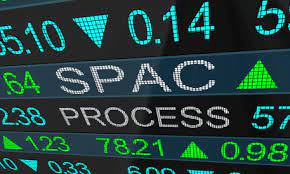
- Strategic Structuring
- Risk Mitigation
Capital Markets
- Digital Engagement
- Market Visibility
Public Perception
- Shareholders Services
- EDGAR Filings


SPACs (Special Purpose Acquisition Companies) are an increasingly popular way for companies to go public, with a surge in popularity that has made them one of the most talked-about investment vehicles on Wall Street, providing a unique alternative to traditional IPOs (IPOs). Here's a look at the mechanics of a SPAC transaction, and how it works.
Number of special purpose acquisition company (SPAC) IPOs in the United States
from 2003 to March 2023
Source: Statista
What’s a SPAC?
A special purpose acquisition company (SPAC) is a "blank check" company without commercial operations. It is formed strictly to raise capital through an initial public offering (IPO) for the purpose of acquiring or merging with an existing company.
The mechanics of a SPAC transaction
The stages of a Special Purpose Acquisition Company (SPAC) can generally be broken down into the following steps:
It's worth noting that the timeline for a SPAC can vary widely depending on several factors, including the size of the SPAC, the investment criteria, and the availability of suitable acquisition targets.
In summary, the mechanics of a SPAC transaction involves a shell company raising funds through an IPO to acquire an existing company or business. Once the acquisition target has been identified and approved by shareholders, the transaction is completed, and the target company becomes a publicly traded company through the SPAC. While SPAC transactions can offer certain benefits, investors should be aware of the unique risks and complexities associated with these types of investments.
Additionally, not all SPACs are successful in finding a suitable target and completing a merger. If a SPAC fails to identify a suitable acquisition target within the specified timeframe, typically around two years, the SPAC will be forced to liquidate and return the funds raised in the IPO to its investors. In this scenario, the investors may receive less than the original amount they invested, as the SPAC may have incurred various expenses related to identifying a target company and conducting due diligence. In addition, if a SPAC identifies a target company but the merger agreement is not approved by shareholders, the SPAC will also be forced to liquidate and return the funds raised in the IPO to its investors.
Reference:
SEC.gov | What You Need to Know About SPACs – Updated Investor Bulletin
Special Purpose Acquisition Company (SPAC) Explained: Examples and Risks
How special purpose acquisition companies (SPACs) work
Why companies are joining the SPAC boom
Special Purpose Acquisition Companies: An Introduction
Thinking of Using a SPAC to Go Public? Here's What to Consider | Toptal®
SPACs - From Setup to IPO | SPAC Consultants
How To Find The Right SPAC Buyer, Negotiate Your Deal And Make The Merger Succeed - Interactive Clic
What is a SPAC? Explaining one of Wall Street’s hottest trends
What are SPACs & The Trend in 2022 | CB Insights Research
The SPAC Bust Could Be a Boon for Targets
 Nasdaq Proposes Stricter Listing Rules to Boost Market Quality
Nasdaq Proposes Stricter Listing Rules to Boost Market Quality
 First Cover Announces Sponsorship at SPAC Conference 2023, Continuing its Commitment to Navigating Complex Management Risks
First Cover Announces Sponsorship at SPAC Conference 2023, Continuing its Commitment to Navigating Complex Management Risks